 Repair parts iPhone 15 Pro Max
Repair parts iPhone 15 Pro Max

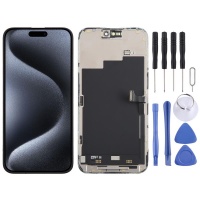
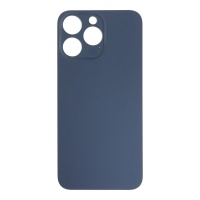
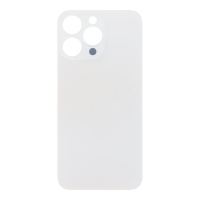
Receive it on thursday 05 de june

Receive it on thursday 05 de june
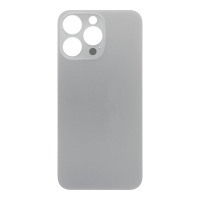
Receive it on thursday 05 de june
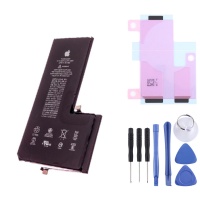
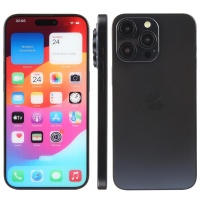



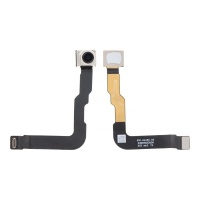
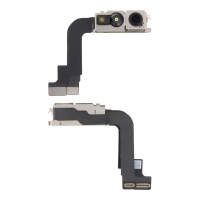
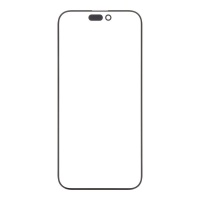
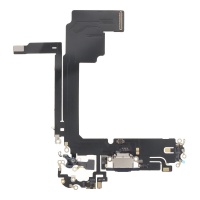

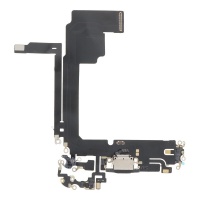
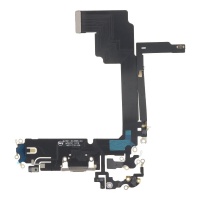
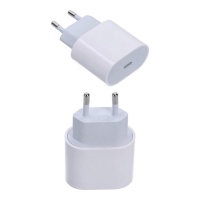
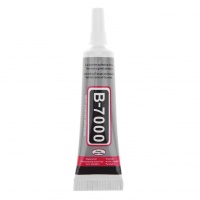
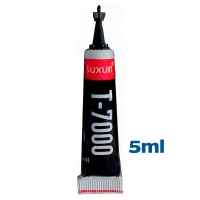


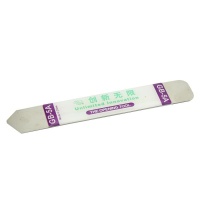


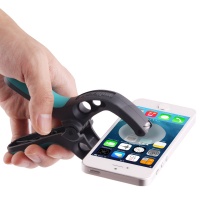
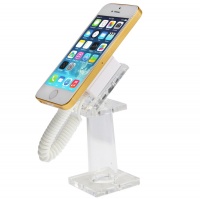
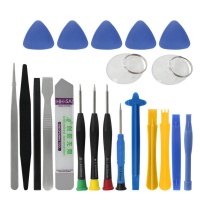


Receive it on thursday 05 de june

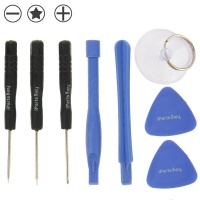
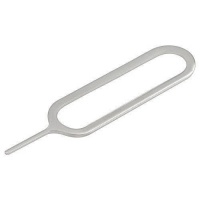
🔋 iPhone 15 Pro Max Battery: The Energetic Heart of Your Device
The battery is the beating heart of your iPhone 15 Pro Max, the power source that brings its stunning display and powerful processor to life. Over time and with use, all rechargeable batteries experience chemical ageing, which reduces their ability to hold a charge. When power begins to fade prematurely, it's time to consider a replacement.
📊 iPhone 15 Pro Max Battery Specifications
The iPhone 15 Pro Max is equipped with an integrated rechargeable lithium-ion battery. According to various sources, the capacity of this battery is approximately 4422 mAh or 4441 mAh, with a voltage of 3.86 V and 17.1 Wh. Apple indicates a duration of up to 29 hours of video playback or up to 95 hours of audio playback. The battery model commonly found for replacement is the A3121.
⚠️ How to Know if Your iPhone 15 Pro Max Battery is Faulty?
Your iPhone will give you signs when its battery is nearing the end of its useful life. Pay attention to these symptoms:
- Rapid Battery Drain: The charge decreases drastically even with minimal use, forcing you to recharge several times a day.
- Unexpected Shutdowns: The phone suddenly turns off, especially when the battery has a low charge, is chemically aged, or in cold temperatures. iOS may apply "performance management" to prevent these shutdowns, which can slow down the device.
- Inaccurate Battery Percentage: The battery indicator jumps or shows incorrect levels.
- Slow Charging or Inability to Charge: It takes much longer than normal to charge or does not hold a charge.
- Overheating During Charging or Normal Use: Although it's normal for it to get slightly warm, excessive and persistent heat is a warning sign.
- Reduced Performance: Applications take longer to open, animations are less fluid, the screen brightness dims, or the speaker volume decreases.
- "Service" or "Battery Health Degraded" Message: In Settings > Battery > Battery Health & Charging, iOS informs you about the maximum capacity of the battery compared to when it was new. If the maximum capacity is significantly below 80%, or if you see a message indicating that the battery health is degraded, replacement is recommended. Apple considers that a battery should be replaced if it retains less than 80% of its original capacity after a certain number of cycles.
- Swollen Battery: In rare cases, a faulty battery can swell, deforming the casing or pushing the screen out. This is a safety risk and requires immediate attention.
Ignoring these symptoms not only affects your user experience but can also lead to major complications with the device.
🤔 OEM Batteries without a Logo: Are They Truly Original?
In the spare parts market, it's common to find batteries labelled as "OEM" (Original Equipment Manufacturer) that do not bear the Apple logo. This can raise doubts, but there's a logical explanation. An OEM battery is one manufactured by the same company (or one with the same standards and specifications) that produces batteries for Apple.
Original Equipment Manufacturers (OEMs) often produce components for multiple brands. Apple, like many other large companies, outsources the manufacturing of certain parts to specialised third parties. These manufacturers can produce batteries identical to those installed in new iPhones, but, due to contractual agreements or for sale in the spare parts market, these batteries may not carry the Apple logo. Sometimes, the logo is omitted to reduce costs or because the battery is sold under the OEM manufacturer's own brand. What's crucial is that the battery meets the technical, quality, and safety specifications of the original. An OEM battery without a logo, if sourced from a reliable supplier, should offer performance comparable to an "original" battery with a logo, as internally they are the same part or a direct equivalent.
This practice is common and does not necessarily indicate inferior quality, as long as the source of the spare part is reputable. The key lies in the quality of the materials and the manufacturing process, not just the presence of a logo. When choosing a replacement battery, the seller's reputation and the product specifications are more important than the mere aesthetics of the labelling.
🛠️ How to Change the iPhone 15 Pro Max Battery: An Essential Guide
Replacing the battery in your iPhone 15 Pro Max can breathe new life into your device. It's a moderately difficult repair that requires care and the right tools. iFixit, for example, estimates a time of 1-2 hours for this process.
- Preparation and Tools:
- Discharge the existing battery to below 25% to reduce the risk in case of accidental puncture.
- You will need a tool kit that includes: Pentalobe P2, Phillips #000, Tri-point Y000 screwdrivers, a suction cup, opening picks, a spudger, tweezers, adhesive for the screen, and for the battery. iFixit kits usually include everything necessary.
- Work in a clean, well-lit, and static-free area.
- Opening the Device:
- Turn off the iPhone. Remove the two Pentalobe screws located on either side of the USB-C port.
- Apply moderate heat to the bottom edges of the screen to soften the adhesive.
- Use a suction cup and opening picks to carefully separate the screen from the chassis. Open it like a book, being careful not to damage the delicate flexible cables connecting it to the logic board.
- Disconnecting the Old Battery:
- Locate and remove the metal cover protecting the battery connector.
- Using a plastic tool (spudger), carefully disconnect the battery connector from the logic board. This is a crucial step to avoid short circuits.
- Remove the adhesive strips holding the battery to the chassis. This may require patience and sometimes a little isopropyl alcohol if the strips break. Do not puncture or bend the battery.
- Installing the New Battery:
- Place the new adhesive strips on the chassis or on the new battery.
- Connect the new battery to the logic board. Secure the connector and replace the metal cover.
- Closing and Testing:
- Reconnect the screen cables. Clean any old adhesive residue and apply the new screen adhesive.
- Close the phone, ensuring the screen fits correctly. Replace the Pentalobe screws.
- Turn on the iPhone. It's advisable to calibrate the new battery: charge it to 100%, continue charging for 2 more hours, then use it until it turns off due to low battery, and finally charge it back to 100% without interruption.
- With iOS 18 and later, you may need to use Repair Assistant to finalise the battery calibration if you used an Apple part or a compatible used part. For third-party batteries, battery health display might be limited or show an "unknown part" message, although Apple has indicated improvements in support for third-party batteries.
Remember: This is a very basic guide. iPhone repairs require precision and patience. If you don't feel comfortable, it's best to go to a professional.
The battery replacement process, though common, is becoming more intricate. It's not just about swapping a part; it involves handling specific adhesives that are often crucial for water resistance (though this is never guaranteed after a non-official repair), using precision tools to avoid damaging other components, and increasingly, interacting with the phone's software for proper calibration. This means the bar for a successful DIY repair is higher. Simply buying "a battery" is no longer enough. The user needs a support ecosystem that includes detailed guides, complete tool kits, and an understanding of the software implications – something we at iLevante.com strive to provide.
🎨 iPhone 15 Pro Max Back Covers: Renewed Style and Protection
That textured matt glass finish is a caress for the eyes and touch, but a slip can turn it into a spider's web of cracks. The back cover not only defines the aesthetics of your iPhone 15 Pro Max but also protects its internal components and is essential for the functionality of MagSafe wireless charging and NFC for Apple Pay.
✨ Material and Available Colours
The back cover of the iPhone 15 Pro Max is made of textured matt glass, a material that offers an elegant finish and helps to hide fingerprints. The available colours for the back cover match those of the device's titanium frame: Black Titanium, White Titanium, Blue Titanium, and Natural Titanium. Replacing a damaged cover with one of the same colour and quality is essential for your iPhone to regain its original, premium look.
💥 Common Causes of Damage
The main cause of damage to the back cover is undoubtedly an accidental drop. Despite the glass's resistance, a direct impact, especially on the edges or corners, can cause cracks or complete shattering of the panel. Deep scratches can also occur with daily use if the phone is carried alongside hard objects like keys without a protective case.
🔧 Basic Back Cover Replacement Process:
Replacing the back cover of the iPhone 15 Pro Max is a considerably more complex procedure than replacing the screen for many models, mainly due to the extremely strong adhesive Apple uses and the need to transfer multiple small components that may be attached to it. Although Apple has redesigned more recent iPhones (since the iPhone 14) so that the rear glass is more easily replaceable than in previous models (which required almost a complete disassembly of the phone), it remains a task that demands skill, patience, and specific tools. The following is a general description of the process; detailed and specific guides for the iPhone 15 Pro Max should always be consulted.
- Preparation: It's crucial to discharge the phone's battery to below 25% to minimise risks. Turn off the device. Necessary tools include a heat gun or a specific heating platform, powerful suction cups, strong metal and plastic opening picks, safety glasses (glass can shatter violently), protective gloves, and specific adhesive for the new cover. Some aftermarket replacement covers come with pre-installed adhesive and, occasionally, a larger camera hole, which avoids the need to transfer the delicate camera lenses.
- Heating and Opening: Controlled and uniform heat must be applied to the edges of the back cover to soften the industrial adhesive that firmly bonds it to the phone's frame. This step is critical: too much heat can damage sensitive internal components like the battery or wireless charging coil; too little heat will make removing the glass impossible.
- Removing the Broken Glass: Once the adhesive has softened, suction cups are used to apply tension, and prying tools (picks, thin and flexible blades) are used to carefully separate the glass from the frame. This process can be extremely tedious and slow, especially if the glass is heavily fragmented. It's vital to proceed with extreme caution to avoid damaging internal flexible cables, paying special attention to the wireless charging coil cable and the flash/rear microphone flex, which are often near the edges or attached to the cover itself.
- Thorough Cleaning of the Frame: After removing all the broken glass and old adhesive, the phone's frame must be meticulously cleaned. Any small glass fragments or adhesive residue will prevent the new cover from seating correctly and sealing properly.
- Transferring Components (Critical Step): Depending on the type of replacement back cover purchased, it's highly likely that several components will need to be transferred from the old cover to the new one. These may include the MagSafe wireless charging coil, the LED flash assembly and rear microphone, NFC antennas, and various brackets or metal shields. This process requires great precision and, in some cases, desoldering or carefully detaching components. Failure to transfer these elements correctly will result in the loss of important functionalities. Some high-quality spare parts may come with some of these components already integrated to simplify the process.
- Applying Adhesive and Fitting the New Cover: The new adhesive (if not pre-installed on the cover) is applied to the phone's frame or the new cover, following the exact pattern. The new back cover is carefully aligned, ensuring all internal cables and components are in place and not pinched, and pressed firmly to ensure a good bond.
- Sealing and Curing: Clamps or rubber bands can be used to maintain uniform pressure on the cover while the adhesive sets and cures completely. Curing time will depend on the adhesive used.
Very Important Considerations:
- Some professional workshops use specialised laser machines to burn and weaken the back cover's adhesive, thus facilitating the removal of broken glass with less risk to the frame and internal components.
- Component Serialisation and Software: It's essential to be aware that Apple serialises (pairs with the logic board) certain components. If the replacement cover is not original or if critical components like the flash assembly are not correctly transferred from the original cover (or if the replacement for these components is not recognised by the system), warning messages may appear in iOS ("Unknown Part") or certain functionalities may be lost. With the arrival of iOS 18, Apple's Repair Assistant tool has been extended to include back cover calibration on iPhone 14 models and later. This suggests that the phone's software now verifies and calibrates this component. An uncalibrated or unrecognised cover could affect wireless charging efficiency, Apple Pay functionality (NFC), or even the accuracy of some sensors.
- Alternatively, if the frame damage is severe or the cover repair seems too complex, there is the option of replacing the entire iPhone housing/chassis, although this involves a complete disassembly and transfer of all the phone's internal components, making it the most invasive repair possible.
The inherent complexity of replacing the back cover, especially the meticulous task of transferring multiple small components and the increasing involvement of software serialisation and calibration, makes this repair a considerable challenge for the inexperienced DIY enthusiast. This could drive greater demand for professional repair services for this specific component. On the other hand, it also encourages the search for replacement back covers that come with the maximum number of pre-installed components (such as the charging coil or larger camera lens openings that do not require transferring the originals), thus simplifying the process. The introduction of Repair Assistant for back cover calibration is a clear sign of how Apple is integrating software into repairs that were previously considered purely mechanical. This is not trivial; an "unrecognised" or poorly calibrated cover could have functional consequences. For iLevante.com, it's vital to stay up-to-date with these developments to correctly advise customers on what to expect when purchasing these spare parts and the importance of following proper procedures if full functionality is desired.
📸 Essential Spare Parts for Your iPhone 15 Pro Max Cameras and Sensors
A blurry photo ruining a memory, a Face ID that refuses to recognise you at the most inconvenient moment... problems with cameras or sensors can be profoundly frustrating. Fortunately, many of these sophisticated components can be replaced, restoring full functionality to your iPhone 15 Pro Max.
🤳 Front Camera with Infrared (IR) for Face ID: Your Face is the Master Key
This module is much more than a simple selfie camera; it's the core of Apple's advanced TrueDepth system. It integrates the visible front camera, an infrared dot projector (which emits thousands of invisible dots onto your face), and an infrared camera that reads this pattern. Together, they create a detailed 3D map of your facial features, enabling the secure and convenient magic of Face ID. If Face ID starts to fail, if the IR camera doesn't seem to illuminate in low-light conditions (which would prevent facial scanning), or if the IR dot projector stops working, this complex component could be responsible.
- Relevant Spare Part Information: High-quality replacement parts for the TrueDepth module aim to replicate the original functionality. However, replacing this component is one of the most delicate repairs with the greatest implications on an iPhone.
- Critical and Unavoidable Warning: Face ID functionality is intrinsically linked for security reasons to the phone's original hardware (a process known as "serialisation" or "pairing"). Replacing the front camera, IR camera, dot projector, or any key component of the TrueDepth system, even using genuine Apple parts, will almost certainly permanently disable Face ID, unless the repair and subsequent calibration of the new component are performed directly by Apple or by an Apple Authorised Service Provider (AASP) who has access to their proprietary diagnostic and configuration systems. Some aftermarket spare parts may allow the front camera to function for taking photos and videos, but Face ID functionality will be lost.
- Common Problems: Complete or intermittent Face ID failure ("Face ID Not Available", "Move iPhone a little higher/lower"), front camera showing an image with a pink hue, inability of the system to scan the face in dark conditions, or error messages related to the TrueDepth camera.
- Spare Part Quality: If maximum compatibility is sought (albeit with the persistent risk to Face ID), spare parts listed as "Service Pack" (original Apple parts intended for technical services) or "Refurbished PRO" (original parts recovered and tested) would theoretically be the highest quality options. "Aftermarket" spare parts are copies made by third parties and may vary in quality and performance. Companies like Risidamoy offer replacement modules for specific iPhone 15 Pro Max models (A3106, A2849, A3105, A3108), but they are transparent in warning about the probable deactivation of Face ID after the change. RepairsUniverse also details the function of the infrared scanner and the problems its replacement solves, although the Face ID issue remains the main warning.
The strict linking of Face ID to the original hardware is undoubtedly the most significant barrier to front camera/IR repair, both for DIY enthusiasts and for many independent workshops. This Apple policy positions the complete restoration of Face ID almost exclusively within its official network or highly specialised services with access to its calibration tools. For the user, this poses a dilemma: assume the often high cost of an official repair to maintain Face ID, or opt for a cheaper camera replacement that only restores image-taking function, sacrificing facial unlocking and Apple Pay via Face ID. At iLevante.com, we consider it crucial that our customers understand this limitation before purchasing a front camera spare part.
📷 Front Camera (Selfie): For Your Best Moments and Crystal-Clear Video Calls
The 12-megapixel front camera of your iPhone 15 Pro Max, with an ƒ/1.9 aperture and autofocus with Focus Pixels, is responsible for your vibrant selfies, FaceTime video calls with stunning clarity, and 4K Dolby Vision HDR video recording. If your self-portraits start to look blurry, the camera app doesn't show an image from the front lens, or strange visual artefacts appear, this component might need replacing.
- Relevant Spare Part Information: Front camera replacement modules usually include the connecting flexible cable and, in some cases, may be integrated with the proximity sensor and other TrueDepth module sensors (which brings us back to the warnings about Face ID). The quality of these spare parts varies considerably on the market. Some spare part manufacturers claim their modules are identical to the original, offering the same 12MP resolution and compatibility with features like Smart HDR 5.
- Common Problems:
- Blurry or out-of-focus photos and videos.
- Permanent spots, dots, or artefacts in the image.
- The camera app shows a black screen or closes unexpectedly when selecting the front camera.
- Incorrect, oversaturated, or, conversely, dull and lifeless colours.
- A frequently reported issue by users of iPhone 15 Pro Max (and recent models) is an apparent over-processing of images by Apple's software, which can make selfies look "artificial", with strange skin textures, too much contrast, or a generally "ugly" appearance compared to the preview or to previous iPhone models. Some users suggest that activating ProRAW can mitigate this effect.
- Spare Part Quality: Various brands and options can be found on platforms like Amazon and eBay. It is absolutely vital to verify the spare part's compatibility with the exact model number of your iPhone 15 Pro Max (A2849, A3105, A3106, A3108). As reiterated, even if only the selfie camera is replaced and not the entire TrueDepth module, there is a risk that Face ID will be affected due to the interconnection of these systems.
The recurring complaints about the over-processing of front camera images on the iPhone 15 Pro Max raise an interesting point from a repair perspective. If a user perceives that the quality of their selfies is poor and assumes their camera is faulty, they might opt for a replacement. However, if the "problem" lies in Apple's image processing algorithm and not a hardware fault, changing the camera (even for an original one) might not resolve their main complaint. This can lead to frustration if, after the repair, the photos continue to exhibit that "over-processed" look. It's a factor to consider when diagnosing "image quality" issues and managing customer expectations.
🔌 Charging Port Flex (USB-C): The Vital Link for Power and Data
The introduction of the USB-C port across the entire iPhone 15 range, including the Pro Max, marked a significant change, aligning with a universal standard and opening the door to new possibilities. This port is not just for charging your device; it's a multifunctional interface for high-speed data transfer, connection to external displays, external storage, and other peripherals. This critical component is mounted on a flexible cable (known as a "flex") that often integrates other elements, such as primary microphones or antennas.
- Relevant Spare Part Information: A good quality replacement charging port flex should restore all original functionalities: efficient charging, data transfer at specified speeds, and correct communication with USB-C accessories, including audio output via adapters if necessary. The quality of the spare part is paramount to ensure not only functionality but also safety, avoiding damage to the logic board from a faulty component.
- Common Problems:
- The iPhone doesn't charge at all or charging is intermittent (the cable needs to be wiggled to charge).
- The computer doesn't recognise the iPhone when connected, preventing synchronisation or file transfer.
- Noticeably slow charging speed, even with appropriate chargers and cables.
- Visible physical damage inside the port (bent or broken pins, obstructions).
- Connection problems with USB-C accessories that work correctly with other devices.
- One aspect to consider is that the USB-C port, although robust, can be susceptible to damage if very low-quality cables are used, if the connection is forced, or if dirt and lint accumulate inside it. Some technicians suggest that iPhone users, accustomed to the greater tolerance of the Lightning port, might need to be more careful with USB-C.
- Spare Part Quality: "Aftermarket Plus" spare parts and others from various suppliers are available on the market. It's crucial to look for parts that specify explicit compatibility with the iPhone 15 Pro Max and, if possible, guarantee support for USB 3 transfer speeds. Installing this component is complex. Often, it's not just a matter of disconnecting and connecting a flex; it may require micro-soldering to desolder the old port from the logic board and solder the new one, or replacing the entire flex assembly which can be intricately woven with other components. A YouTube video tutorial by MR Rana and guides from sites like DIYfixtool illustrate the complexity of replacing the charging flex. It's essential to use good quality USB-C cables after the repair to preserve the lifespan of the new port; brands like Anker, Belkin, or UGREEN are renowned for their reliability.
Repairing the USB-C port, especially if it involves micro-soldering, is at a difficulty level that generally exceeds the capabilities of the average user. This underscores the importance of acquiring the highest quality spare parts to ensure the durability of the repair and avoid premature failures or, worse, additional damage to the iPhone's logic board. The warning about the USB-C port's sensitivity to the use of poor-quality generic cables is particularly pertinent. This is not only a common cause of failure for the original port but can also compromise a newly replaced port. Therefore, at iLevante.com, in addition to offering charging port spare parts, we believe it's valuable to educate on the importance of using certified USB-C cables or those from reputable brands. This not only protects the investment in the repair but can also prevent future breakdowns, representing an opportunity to offer a more comprehensive solution to the customer.
⚙️ Other Important Spare Parts for Your iPhone 15 Pro Max
Beyond screens, batteries, and cameras, your iPhone 15 Pro Max houses a symphony of small but crucial components that may require attention. A failure in any of them can significantly diminish your experience. At iLevante.com, we strive to cover all your needs:
- Earpiece Speaker: Do voices in your calls sound distant, distorted, or simply inaudible? This small speaker, located at the top of the phone, is essential for telephone conversations. Its failure can turn calls into a frustration. Spare parts are available to restore clarity to your communications.
- Main Speaker (Loudspeaker): This is responsible for filling the room with the sound of your ringtones, alarms, music in speaker mode, and the audio from your videos and games. If the sound is low, crackling, or completely absent, this component, usually located at the bottom of the phone, needs replacing.
- Taptic Engine: Apple revolutionised haptic feedback with its Taptic Engine, providing those subtle and precise vibrations you feel when typing, receiving notifications, or interacting with the interface. If vibrations become weak, erratic, noisy, or disappear altogether, the Taptic Engine could be the culprit. Spare parts are available to restore that characteristic tactile sensation.
- Button Flex Cables (Power/Volume/Action): The physical buttons on your iPhone are mechanical switches connected to the logic board via flexible cables. With constant use, these flexes can wear out or become damaged, causing the buttons to stop responding, work intermittently, or get "stuck". Replacement flexible cables are available that cover the power and volume buttons, and also for the Action Button.
- Antennas (Wi-Fi/Bluetooth/Cellular/GPS/NFC): Your iPhone is a hub of wireless technology. Persistent connectivity issues (slow or disconnecting Wi-Fi, Bluetooth not pairing, weak or non-existent cellular signal, inaccurate GPS, Apple Pay failures) that are not resolved by reboots, resetting network settings, or software updates, could indicate a fault in one of the multiple internal antennas. Specific spare parts, such as the Wi-Fi antenna, are available.
- SIM Tray (if applicable to your regional model): Although iPhone 15 Pro Max models sold in the US are exclusively eSIM, versions for other international markets may still include a physical tray for nano-SIM cards. This small metal or plastic piece can bend, break, or simply get lost, preventing the use of a physical SIM.
- Various Sensors (Proximity, Ambient Light): The proximity sensor turns off the screen when you bring the phone to your ear during a call. Ambient light sensors automatically adjust screen brightness. If these functions fail, the corresponding sensors (often integrated into the front camera flex or other assemblies) might need replacing.
- Internal Screws and Brackets: During any repair, it's incredibly easy to lose some of the tiny and varied screws that hold the internal components of the iPhone. Having access to model-specific screw sets or small brackets and metal shields can be a real lifesaver for completing a repair professionally.
The availability of a wide range of these spare parts, sometimes considered "minor" but no less important, is fundamental for both professional repair workshops and more advanced DIY users. A fault in a seemingly small part, like a button flex or a speaker, can drastically affect the usability and overall satisfaction with such a sophisticated device. At iLevante.com, we understand this and strive to be your one-stop shop for all your iPhone 15 Pro Max repair needs.
🛠️ Basic Repair Guide: Proceed with Caution
Embarking on a DIY (Do It Yourself) repair of your iPhone 15 Pro Max can be a rewarding experience and a way to save costs, but it's not a task to be taken lightly. It requires good preparation, infinite patience, and the right tools. Always remember that working on electronic devices as complex and compact as the iPhone 15 Pro Max carries inherent risks. If at any point you feel unsure or the procedure exceeds your skills, it's much better to stop and consult a qualified professional technician.
🧰 Essential Tools for the Home Workshop:
To tackle most common iPhone repairs, a basic tool kit should include the following items (many of which are often included in "Fix Kits" offered by specialised shops like iFixit):
- Precision Screwdriver Set: Indispensable. At a minimum, you'll need:
- Pentalobe P2 (for the two external screws at the bottom, flanking the USB-C port).
- Phillips #000 (for many internal screws).
- Tri-point Y000 (for screws holding connector shields and other internal components).
- Suction Cup: To apply suction to the screen and help lift it from the chassis.
- Plastic Opening Picks (iFixit Opening Picks) or thin plastic cards: To slide between the screen and frame and cut the adhesive without damaging components.
- Plastic Spudger: Antistatic and non-conductive tool, ideal for disconnecting flexible cables, gently prying components, and manipulating small parts.
- Tweezers: Fine-tipped and/or angled, for handling tiny screws and flexible cables.
- Controlled Heat Source: A mobile-specific heat mat or a heat gun with temperature control (use with extreme caution). A powerful hairdryer might work in some cases but offers less control.
- Model-Specific Adhesive: Pre-cut adhesive strips for sealing the screen and/or back cover, crucial for attempting to maintain some splash resistance (original IP68 watertightness is difficult to restore).
- Antistatic Gloves and Antistatic Wrist Strap (highly recommended): To prevent damage from electrostatic discharge to sensitive electronic components.
- Safety Glasses: Especially important when working with broken glass, as small splinters can fly off.
- Magnetic Project Mat (optional but very useful): To organise the tiny and varied screws and prevent them from getting lost.
📜 General Tips and Best Practices for Repairing Your iPhone:
- Research Thoroughly BEFORE You Start: Do not underestimate this step. Watch multiple written guides and video tutorials for the specific procedure you are going to perform on your iPhone 15 Pro Max. Sites like iFixit are an excellent source for step-by-step guides. Apple also publishes repair manuals for some of its self-service programmes, which can offer valuable information.
- Meticulous Organisation: The key to success. Keep screws and small parts extremely organised. iPhones use screws of different lengths and types; putting an incorrect screw in a hole can irreparably damage the logic board. Use a magnetic mat with a diagram, small labelled containers, or draw a schematic and tape the screws to it.
- Patience, Patience, and More Patience (and Gentleness): Force absolutely nothing. If something doesn't give, you're probably forgetting a screw or a clip. Internal components, especially flexible cables and their connectors, are incredibly delicate and can break with minimal pressure or an incorrect angle.
- Disconnect the Battery First (Almost Always): As soon as you have access to the inside of the phone and before disconnecting any other component, disconnect the battery. This minimises the risk of accidental short circuits that could permanently damage the device.
- Discharge the Battery Before Handling It: If the repair involves handling or removing the lithium battery, ensure its charge level is below 25%. A fully charged lithium battery is more prone to catching fire or exploding if accidentally punctured or damaged.
- Document the Process: Take photos as you disassemble. You'll be surprised how useful this can be when reassembling.
🔩 General Steps for Common Repairs (This is just a Simplified SUMMARY!):
- Screen Replacement:
- Turn off the iPhone, remove the two bottom Pentalobe screws next to the USB-C port.
- Apply gentle, even heat to the edges of the screen to soften the adhesive. Use a suction cup and plastic picks to carefully lift and separate the screen from the chassis, opening it like a book (usually to the right). Extreme care with flexible cables!
- Remove the internal metal shields, disconnect the battery first, and then the flexible cables for the screen and front sensor assembly.
- Very carefully transfer the earpiece/proximity sensor/microphone assembly from the old screen to the new one if the spare part doesn't include it. This is a critical point: damage here can permanently disable Face ID.
- Connect the new screen, reconnect the battery, clean old adhesive residue from the frame, apply new adhesive, and close the phone, securing the Pentalobe screws.
- Important warnings: According to iFixit, features like True Tone and auto-brightness may be disabled when using aftermarket screens. With iOS 18.1, Apple might allow replacement and recalibration of the earpiece flex cable if damaged during screen repair, which is good news for repairers.
- Battery Replacement: (Refer to the detailed "Battery" section for a more complete breakdown of this process). The general steps are similar to opening for screen replacement, followed by careful disconnection and removal of the old battery (attention to adhesive strips!) and installation of the new one.
🔑 The Crucial Role of Software Calibration (Apple's Repair Assistant):
With the launch of iOS 18 and the evolution of its hardware, Apple has consolidated and expanded the use of a software tool called Repair Assistant. This utility runs after certain key parts have been physically replaced in an iPhone 15 Pro Max (and other recent models). Its purpose is to install specific calibration data for the new part and, essentially, "introduce" the new component to the operating system to officially finalise the repair. Parts that may require this step include the battery, screen, cameras (front TrueDepth and rear), and, on iPhone 14 and later, even the back cover.
- Why is this calibration so important? If this software step is not completed or fails, the replaced part might not function at 100% capacity, or issues such as loss of specific functions could arise. For example, Face ID or Touch ID (on models that have it) might stop working, True Tone could be disabled, accurate battery health information might not be displayed, or persistent "unknown part" or "component issue" messages might appear in the iPhone's settings.
- Who can use Repair Assistant? The tool is designed for both users participating in Apple's self-service repair programmes and technicians at Apple Authorised Service Providers (AASPs). An interesting feature is that if you use a used genuine part from another iPhone of the same model, Repair Assistant might help calibrate it to work correctly in your device.
- Implications for aftermarket (non-original) replacement parts: This is where the situation becomes more complex. Full Repair Assistant support for third-party parts is not guaranteed or fully implemented for all functions or part types. It's highly probable that some functions will not be fully restored, or that warnings will continue to appear, even if the tool is used, if the part is not recognised as genuine or compatible by Apple's component security and pairing system.
The increasing interdependence between physical hardware and software calibration is transforming the iPhone repair landscape. A successful replacement no longer depends solely on the technician's manual skill and the intrinsic quality of the spare part. Now, the ability to interact with Apple's diagnostic and calibration software is also crucial. This can pose a significant limitation to the effectiveness of some repairs performed outside Apple's official network, especially if this software step cannot be completed or if the installed part is not "accepted" by the system. "Repairability" is increasingly becoming a matter of both hardware and software "authorisation". As this trend of software calibration becomes more integral to Apple's repair ecosystem, transparency with the customer will be fundamental for a shop like iLevante.com. It will not be enough to sell quality spare parts; it will be necessary to provide up-to-date and clear information about the compatibility of these parts with Apple's calibration processes and the potential functional limitations the customer might face. This could include guides on how to attempt to use Repair Assistant (if accessible for the part type and repair), or explicit warnings about which functions might be lost or what messages might appear when using aftermarket parts, even if they are high quality. This honesty and level of detail will be key to maintaining customer trust in an increasingly manufacturer-controlled repair environment.
💻 Software vs. Hardware: Not All Faults Are Physical (Technical Perspective) 🐛
In the complex ecosystem of an iPhone 15 Pro Max, sometimes your device may start to behave erratically, making you fear the worst: a hardware component has failed and needs replacing. However, from a technical repair perspective, it's absolutely crucial not to jump to conclusions. Many problems that appear to be hardware failures can, in fact, originate from the software (iOS or third-party applications). Correctly identifying the root cause can save you time, money, and the effort of an unnecessary part replacement.
- Common Symptoms That Can Be Caused by Software Problems (and not Hardware):
- Lack of Touch Response or Screen Freezes: The screen becomes unresponsive to touch at times, or the device freezes completely. Before thinking of a faulty digitiser, consider that this could be a temporary iOS error, an application consuming too many resources, or a software incompatibility.
- Abnormally Fast Battery Drain: If you notice the battery draining much faster than usual, especially after an iOS update, don't immediately assume the battery is faulty. The new software might have bugs that increase power consumption, or the system might be performing intensive background tasks like re-indexing data.
- Excessive Overheating: An iPhone that gets hotter than normal without performing heavy tasks (like 3D gaming or video editing) might be the victim of a poorly optimised application, a background process that has got "stuck", or an operating system bug. Apple, in fact, released iOS 17.0.3 specifically to address overheating issues reported on Pro models.
- Connectivity Problems (Wi-Fi, Bluetooth, Mobile Data): Difficulty connecting to Wi-Fi networks, frequent Bluetooth disconnections, or problems with the mobile data signal. Before considering replacing an antenna, check that it's not a software error, a bad network configuration, or even a temporary problem with your service provider. Sometimes, an iOS update can introduce regressions that affect mobile services.
- Intermittent Camera Failures: The camera app shows a black screen, closes unexpectedly, or photos sporadically come out with strange artefacts.
- Constant Reboots or Boot Loops: The iPhone restarts on its own repeatedly or gets stuck on the Apple logo during startup. This can be caused by a failed software update, corrupted system data, or a conflicting application.
- "Glitchy" or Slow Keyboard: The words you type don't appear on the screen immediately, or they do so with a considerable delay, sometimes accompanied by a flurry of keyboard "click" sounds.
- Fundamental Software Troubleshooting and Diagnostic Steps (Before Disassembling the Phone):
- Restart the iPhone: The simplest and often surprisingly effective solution. A normal restart (turning off and on) can fix minor glitches.
- Force Restart (Hard Reset): If the phone is completely frozen or unresponsive. For iPhone 15 Pro Max (and models since iPhone 8): Quickly press and release the volume up button. Quickly press and release the volume down button. Then, press and hold the side button (power) until you see the Apple logo on the screen (ignore the "slide to power off" slider).
- Update iOS to the Latest Version: Ensure your device has the latest version of iOS installed. Apple regularly releases updates that fix known bugs and improve stability and performance. You can check this in Settings > General > Software Update.
- Check for Application Updates: An outdated or buggy application can cause system instability. Check the App Store for pending updates.
- Reset Settings: If the problem started after changing a specific setting, you can try resetting it. Go to Settings > General > Transfer or Reset iPhone > Reset. You have several options here:
- "Reset All Settings": Returns all system settings to their defaults without deleting your personal data (photos, apps, etc.).
- "Reset Network Settings": Useful if you're having Wi-Fi, mobile data, or Bluetooth problems. Deletes all saved Wi-Fi networks and passwords, VPN and APN settings.
- Recovery Mode and Restoration with a Computer: If software problems are severe and persistent, you can try reinstalling iOS using a computer. This process can erase all data on your iPhone, so make sure you have a recent backup. Connect your iPhone to the computer. Open Finder on a Mac with macOS Catalina or later, or iTunes on a Mac with macOS Mojave or earlier, or on a Windows PC (or the Apple Devices app in recent Windows versions). Put your iPhone into recovery mode. The computer will offer you the option to "Update" or "Restore". "Update" will try to reinstall iOS without erasing your data (useful if the problem is only with the operating system). "Restore" will erase all content on the iPhone and install the latest version of iOS (a "clean slate").
- DFU (Device Firmware Update) Mode: This is the deepest level of firmware restoration and is considered a last resort for very ingrained software problems. DFU mode allows the iPhone to communicate with Finder/iTunes without loading the bootloader (iBoot) or the operating system. This can be useful if the iPhone doesn't boot or if normal recovery mode doesn't work. The iPhone screen will remain completely black when in DFU mode (if you see the Apple logo or the "connect to iTunes" screen, you are not in DFU). The steps to enter DFU mode on an iPhone 15 Pro Max (similar to iPhone 8 and later) are:
- Connect the iPhone to the computer.
- Quickly press and release the volume up button.
- Quickly press and release the volume down button.
- Press and hold the side button until the screen turns black.
- Once the screen is black, while still holding the side button, also press and hold the volume down button for exactly 5 seconds.
- After 5 seconds, release the side button but continue to hold the volume down button for at least another 5-10 seconds.
- When to Suspect a Software Problem (From a Repair Technician's Perspective):
- The problem arises abruptly and immediately after a software update (iOS or even an important app).
- The problem is intermittent, erratic, and doesn't seem to correlate with any physical damage or specific event (like a drop).
- Multiple users on online forums or Apple communities start reporting the same problem or a similar set of symptoms after a particular software update.
- Apple's hardware diagnostic tools (if accessible or run through Apple support) show no consistent hardware failures, or may even give contradictory results at different times.
The line between a software fault and a hardware fault can be incredibly blurry for the average user, and even sometimes for technicians who lack advanced diagnostic tools. The fact that a simple iOS update can, for example, cause an iPhone's mobile services to stop working completely, and that Apple's own diagnostic system can offer inconsistent results in such situations, highlights the critical importance of exhausting all software troubleshooting avenues before recommending or undertaking a hardware repair, which is usually more costly and invasive. A tiered approach, always starting with software solutions, is crucial for accurate diagnosis and to avoid unnecessary expense. The increasing complexity of iOS software and its deep, almost symbiotic, integration with iPhone hardware means that "bugs" or software errors can have manifestations that seem very physical and alarming to the user (such as worrying overheating or a screen that stops responding to touch). This can lead to a misperception of the iPhone's hardware reliability, especially when it's a high-end, costly device. For a shop like iLevante.com, this represents a golden opportunity to position itself not only as a supplier of spare parts but as a source of balanced and expert information. By including a robust and clear section on differentiating between software and hardware problems, and by guiding the user through software diagnostic steps, iLevante.com demonstrates a customer-centric approach and a deep product knowledge. This can build trust and loyalty, even if in a particular instance a spare part sale isn't made because the problem is resolved at the software level. The customer will remember the help and honesty, and is likely to turn to iLevante.com for future hardware needs or advice.
💡 Keep Your iPhone 15 Pro Max Like New with iLevante.com
Your iPhone 15 Pro Max is much more than just a phone; it's an investment in cutting-edge technology, exceptional design, and a tool that accompanies you in countless moments of your life. When the inevitable hardware problems arise, or when natural wear and tear take their toll, knowing you have access to quality spare parts and the right information to make decisions is absolutely fundamental. Whether it's a screen that needs to restore the original vibrancy to your images, a battery yearning to regain the autonomy to last you through the entire day, or any other vital component, each part plays a crucial role in the symphony of your device.
At iLevante.com, we are not only dedicated to offering you a carefully curated and exhaustive selection of spare parts for your iPhone 15 Pro Max, but we are also committed to providing you with the knowledge and transparency necessary for you to understand the available options, the processes involved in each repair, and the implications of each choice. We understand that the world of mobile phone repair can seem complex, especially with the sophistication of devices like the iPhone 15 Pro Max and the increasing interactions between hardware and software dictated by the manufacturer.
Whether you're a DIY enthusiast willing to venture into a repair with due caution and the correct tools, or you're looking for the perfect part for a trusted professional technician to restore your device to its full glory, at iLevante.com we are here to support you. Our goal is to empower you, providing not only the components but also the confidence that comes from being well-informed.
Explore our catalogue of spare parts for iPhone 15 Pro Max, consult our guides and resources, and ensure your device continues to be the technological marvel and indispensable companion you've always wanted it to be. ✨📱







